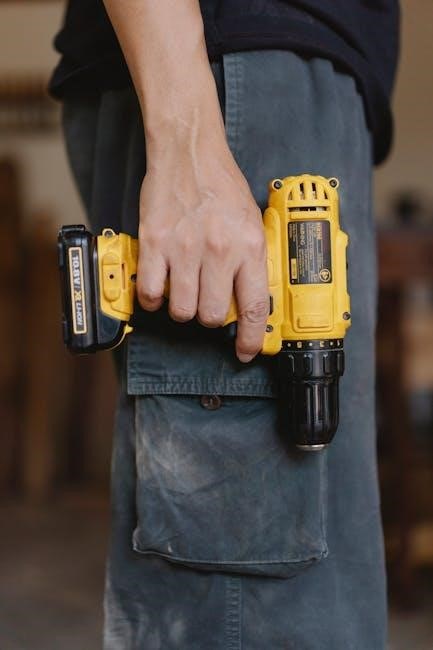Garrett AT Pro Manual: A Comprehensive Guide
Embark on a journey to master your Garrett AT Pro metal detector with this comprehensive guide․ This manual serves as your trusted companion, unlocking the full potential of your device․ From basic operations to advanced techniques, you’ll discover everything needed to maximize your success in the field․
The Garrett AT Pro stands as a versatile and powerful metal detector, celebrated among hobbyists and seasoned professionals alike․ Designed for challenging environments, this all-terrain detector excels in various conditions, from dry land to shallow water, making it a reliable companion for any treasure hunting expedition․

This introduction serves as a gateway to understanding the AT Pro’s capabilities and features․ Within this guide, you’ll find detailed instructions on how to operate the detector effectively, interpret its signals, and ultimately, uncover valuable finds․ The AT Pro incorporates advanced technology to distinguish between desirable targets and unwanted trash, significantly improving your chances of success․

Whether you’re a beginner eager to learn the basics or an experienced detectorist seeking to refine your skills, this manual offers a wealth of information tailored to your needs․ By delving into its pages, you’ll gain insight into the AT Pro’s functionalities, ensuring you can confidently navigate its settings and maximize its performance․
Key Features and Technologies of the AT Pro
The Garrett AT Pro boasts a range of features and technologies that set it apart in the world of metal detecting․ A standout feature is its all-terrain capability, allowing it to perform optimally in diverse environments, including freshwater hunting․ This versatility is crucial for detectorists who explore various locations․
The AT Pro’s high-resolution iron discrimination is another key advantage, enabling users to differentiate between iron trash and valuable targets, reducing unnecessary digging․ This feature is especially useful in areas with high iron contamination․
Proportional audio provides more target information, allowing the user to hear subtle changes in the target’s response․ This advanced audio feedback assists in identifying target characteristics and making informed decisions about whether to dig․
The detector’s digital target ID displays a numerical representation of the target’s conductivity, aiding in target identification․ This feature, combined with the AT Pro’s ability to ground balance to mineralized soil, further enhances its accuracy and effectiveness in challenging conditions․
Understanding the Control Panel
The Garrett AT Pro’s control panel is designed for intuitive operation, allowing users to easily adjust settings and navigate through various functions․ Familiarizing yourself with the panel is essential for effective use of the detector․ The power button controls the device’s on/off function, as well as accessing factory reset by holding it down for 5-10 seconds until a double beep happens․
The sensitivity control allows you to adjust the detector’s responsiveness to targets, with higher settings detecting smaller or deeper objects․ However, increasing sensitivity may also increase interference from ground mineralization or electromagnetic sources․
The discrimination control enables you to reject unwanted targets, such as iron, by adjusting the level of discrimination․ This feature helps to reduce the amount of trash you dig up while searching for valuable finds․
The mode selection buttons allow you to choose from various search modes, each optimized for different types of targets and environments․
Search Modes Explained
The Garrett AT Pro offers a range of search modes tailored to different detecting scenarios․ Understanding each mode is crucial for maximizing your success in various environments; The “All Metal” mode detects all types of metal, providing the deepest detection depth and sensitivity․ This mode is ideal for prospecting or searching in areas with unknown targets․
The “Coins” mode is optimized for detecting coins, with a pre-set discrimination pattern that rejects most trash targets․ This mode is suitable for parks, beaches, and other areas where coins are likely to be found․
The “Custom” mode allows you to create and save your own custom discrimination pattern․ This mode is useful for tailoring the detector to specific targets or environments․
The “Zero” mode is a basic mode with no discrimination, detecting all metal types equally․ This mode is useful for identifying the composition of unknown targets․
The “Pro” modes offer advanced audio feedback․

Target ID and Discrimination
The Garrett AT Pro boasts advanced Target ID and Discrimination features, enabling you to distinguish between various metal types and filter out unwanted signals․ The Target ID scale, displayed on the LCD screen, provides a numerical representation of the detected target’s conductivity․ This number helps you identify the potential type of metal before digging․ Higher numbers typically indicate ferrous metals like iron, while lower numbers suggest non-ferrous metals like gold or silver․
Discrimination allows you to reject specific Target ID ranges, effectively eliminating signals from trash items like bottle caps or pull tabs․ By carefully adjusting the discrimination settings, you can focus on valuable targets while minimizing the time spent digging up unwanted items․ Understanding how to interpret Target ID numbers and effectively utilize discrimination is crucial for efficient and productive metal detecting․ Experiment with different settings in various environments to master these essential features․

Ground Balancing Techniques
Ground balancing is a critical technique for optimizing your Garrett AT Pro’s performance, especially in mineralized soils․ Mineralization can cause false signals and reduce detection depth․ Ground balancing neutralizes these effects by teaching the detector to ignore the ground’s natural minerals․ The AT Pro offers both automatic and manual ground balancing options․ Automatic ground balance rapidly adjusts to the soil conditions, making it ideal for quickly surveying new areas․
Manual ground balance provides more precise control, allowing you to fine-tune the settings for maximum sensitivity․ To manually ground balance, pump the search coil up and down over the ground while adjusting the ground balance knob until the threshold sound stabilizes․ Correct ground balancing ensures accurate target identification and maximizes detection depth․ Understanding the nuances of ground balancing techniques is essential for successful metal detecting in various soil conditions․

Pinpointing with the AT Pro
Pinpointing is an essential skill for efficiently locating targets after they’ve been detected․ The Garrett AT Pro features a dedicated pinpoint mode that helps narrow down the target’s exact location before digging․ To use the pinpoint mode, first, pass the search coil over the target area to get a general sense of its location․ Then, activate the pinpoint mode by pressing the pinpoint button․
Slowly move the search coil over the area where you received the target signal․ The AT Pro’s audio signal will increase in intensity as you get closer to the target․ The strongest signal indicates the target’s precise location․ The AT Pro’s display also provides visual cues, such as a depth indicator, to further assist in pinpointing․ Accurate pinpointing minimizes the size of your dig holes, preserving the environment and making target recovery faster and easier․ Practice and familiarity with the pinpoint mode are key to mastering this essential skill․
Advanced Pro Audio Modes

The Garrett AT Pro distinguishes itself with its advanced Pro Audio modes, designed for experienced users seeking more nuanced target information․ Unlike standard audio modes that provide a simple on/off response, Pro Audio delivers proportional audio, meaning the sound’s intensity and pitch vary based on the target’s signal strength․ This allows users to discern subtle differences in target characteristics, like size and depth․
In Pro Audio mode, even faint signals can be heard, enabling the detection of deeper or smaller targets․ The Pro Audio also provides a more natural and intuitive sound, resembling what you would hear in the real world․ This reduces the “choppy” or abrupt audio response found in standard modes․ Mastering Pro Audio takes practice, but the rewards are significant, providing a wealth of information that can lead to more successful hunts․

Maintenance and Care
Proper maintenance and care are essential to prolonging the life and performance of your Garrett AT Pro metal detector․ After each use, wipe down the detector with a damp cloth to remove dirt, mud, or moisture․ Avoid using harsh chemicals or abrasive cleaners, as these can damage the control box and other components․
Periodically inspect the search coil and cable for any signs of damage․ Ensure the cable is securely connected and not frayed or broken․ Store the AT Pro in a cool, dry place when not in use․ Avoid exposing it to extreme temperatures or direct sunlight, as this can cause warping or damage to the electronics․
Check the battery compartment regularly for corrosion and clean it as needed․ When replacing batteries, use only high-quality AA batteries․ If you won’t be using the detector for an extended period, remove the batteries to prevent leakage․ With proper care, your AT Pro will provide years of reliable service․

Troubleshooting Common Issues

Even with proper care, you may encounter occasional issues with your Garrett AT Pro․ If the detector isn’t turning on, first ensure the batteries are fresh and properly installed․ If the display is dim or flickering, replace the batteries․ If you’re experiencing erratic readings or false signals, try adjusting the sensitivity and ground balance settings․
Check the search coil for any damage or debris․ Ensure the coil cable is securely connected to the control box․ If you’re still experiencing issues, try resetting the detector to its factory settings by holding the power button for 5-10 seconds until you hear a double beep․
If you’re not getting any target signals, ensure you’re in the correct search mode and that the discrimination settings aren’t too high․ If the problem persists, consult the troubleshooting section of the owner’s manual or contact Garrett customer support for further assistance․